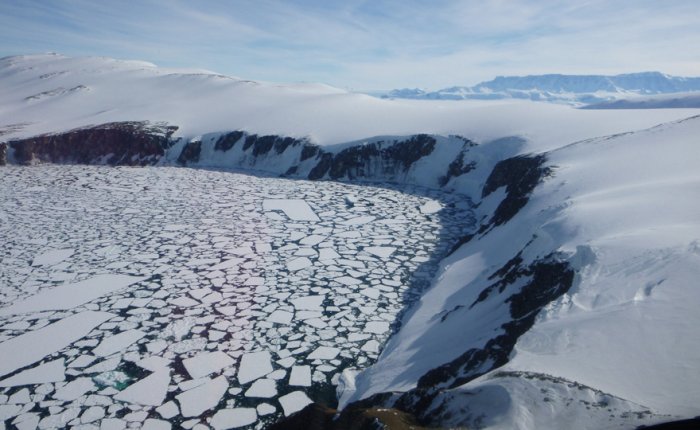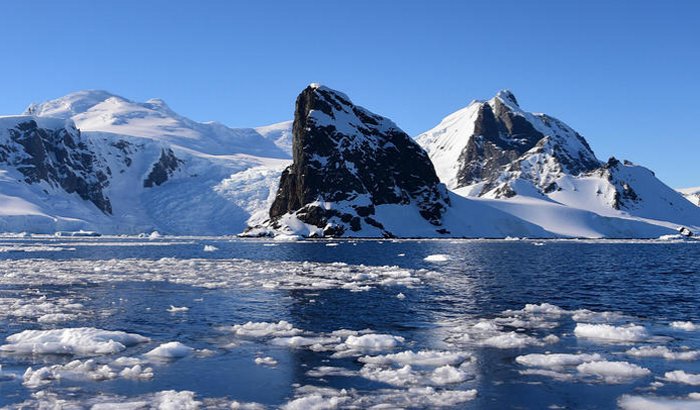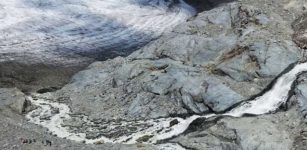Latest Temperature Over 20 C In Antarctica Spark Serious Concerns
Eddie Gonzales Jr. – MessageToEagle.com – A new record temperature of 20.75 degrees Celsius (69.35 Fahrenheit), breaking the barrier of 20 degrees for the first time on the continent, has been recorded in Antarctica.
A temperature that high had never been registered in Antarctica.
 Ice floes in the Antarctica – Photo: Giuseppe Aulicino
Ice floes in the Antarctica – Photo: Giuseppe Aulicino
The reading was taken at Seymour Island, part of a chain off the peninsula that curves out from the northern tip of Antarctica.
“We’d never seen a temperature this high in Antarctica,” Brazilian soil scientist Carlos Schaefer told AFP. The reading was taken as part of a 20-year-old research project on the impact of climate change on the region’s permafrost. He also added that this reading, taken at a monitoring station on an island off the continent’s northern tip on February 9, “has no meaning in terms of a climate-change trend,” because it is a one-off temperature and not part of a long-term data set.
“We’ve been monitoring temperatures here for the past 18 years and I never even dreamed that I would one day see such high temperature in the region,” said Brazilian professor and Responsible for the Seymour Island station, according to report in France24.
The island is home to Argentina’s Marambio research base.
But news that the icy continent is now recording temperatures in the relatively balmy 20s is likely to further fuel fears about the warming of the planet. The previous high was in the 19s. Accelerating melt-off from glaciers and especially ice sheets in Antarctica is helping drive sea level rises, threatening coastal megacities and small island nations.
“We can’t use this to anticipate climatic changes in the future. It’s a data point. It’s simply a signal that something different is happening in that area,” Schaefer explained.
 View of Orne Harbour in South Shetland Islands, Antarctica, on November 27, 2019. © Johan Ordonez, AFP
View of Orne Harbour in South Shetland Islands, Antarctica, on November 27, 2019. © Johan Ordonez, AFP
The news came a week after Argentina’s National Meteorological Service recorded the hottest day on record for Argentine Antarctica: 18.3 degrees Celsius at midday at the Esperanza base, located near the tip of the Antarctic peninsula. The previous record stood at 17.5 degrees on March 24, 2015, it said. It has been recording Antarctic temperatures since 1961.
The past decade has been the hottest on record, the United Nations said last month, with 2019 the second-hottest year ever, after 2016.
And 2020 looks set to continue the trend: last month was the hottest January on record.
See also:
Dangerous Thwaites Glacier: Drilling In Remote And Hostile Areas Of West Antarctica
Antarctica’s Ross Ice Shelf Is Melting 10 Times Faster Than Expected
According to a study published on February 14 in the Earth System Dynamics review, Antarctic melting could raise sea levels by 58 centimeters by the end of the century.
But the region stores about 70 percent of the world’s freshwater stock in the form of snow and ice, according to the Guardian. In case it was all to melt, sea levels could rise not only by 58 centimeters but rather by 50 to 60 meters.
“The ‘Antarctica Factor‘ turns out to be the greatest risk, and also the greatest uncertainty, for sea-levels around the globe,” lead-author Anders Levermann from the Potsdam Institute of Climate Impact Research told AFP. It could have unpredictable consequences, threatening more than one billion people living in vulnerable areas.
Temperatures in eastern and central Antarctica are relatively stable, but this might not be the case for its Western part, past the Seymour Islands. Its Thwaites and Pine Island glaciers could melt rapidly in case of a sustained jump in temperature.
The team behind the Australian study said that rapid cuts to carbon emissions, such as stipulated in the 2015 Paris Agreement on climate change, could help limit the loss of ice-sheet and slow the process.
But emissions creep higher every year. The world is therefore likely to have to face significant challenges to communities living at a low-sea level by 2100.
“What we know for certain is that not stopping the burning of coal, oil, and gas will drive up the risks for coastal metropolises from New York to Mumbai, Hamburg or Shanghai,” Levermann said.
Written by Eddie Gonzales Jr. – MessageToEagle.com Staff










